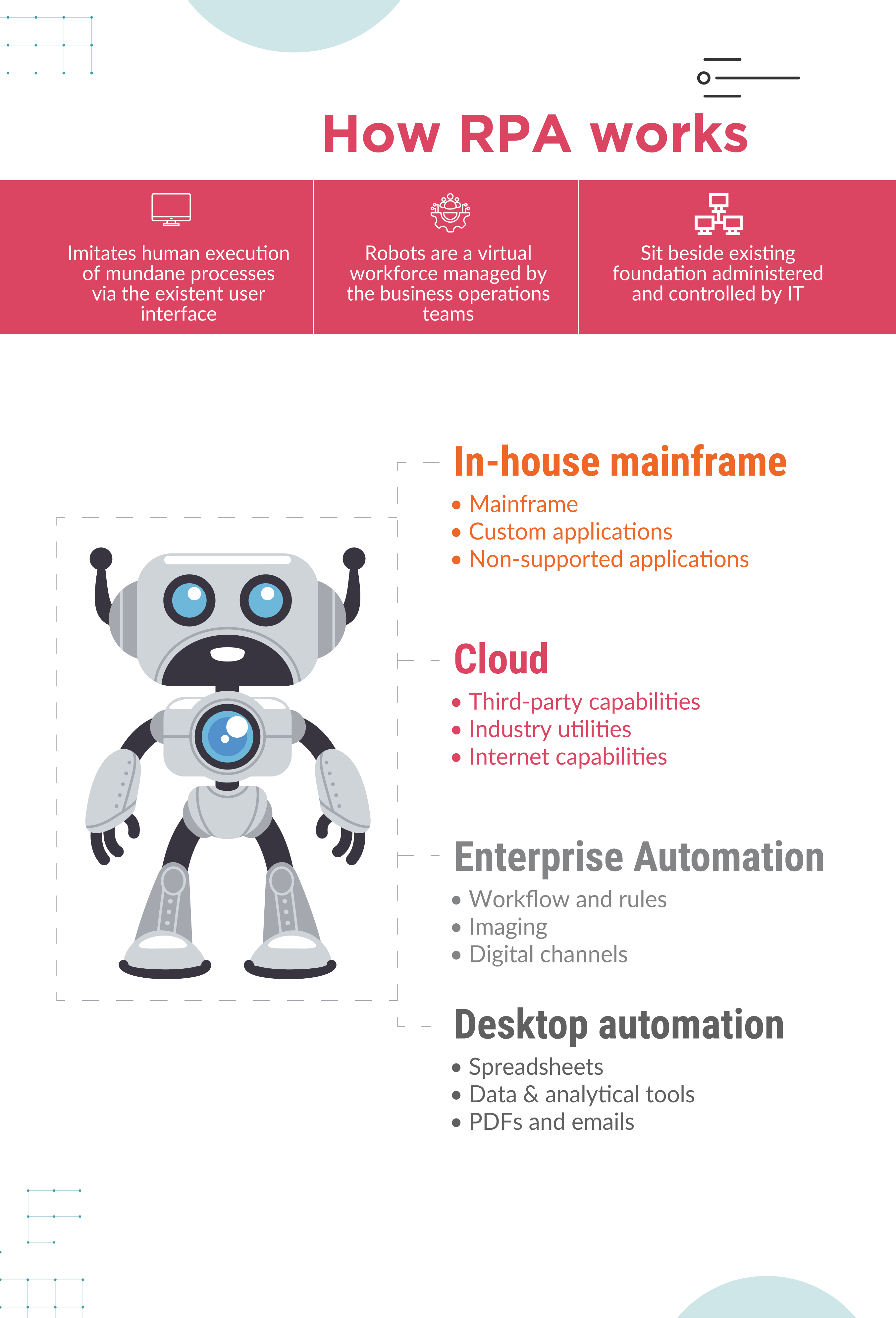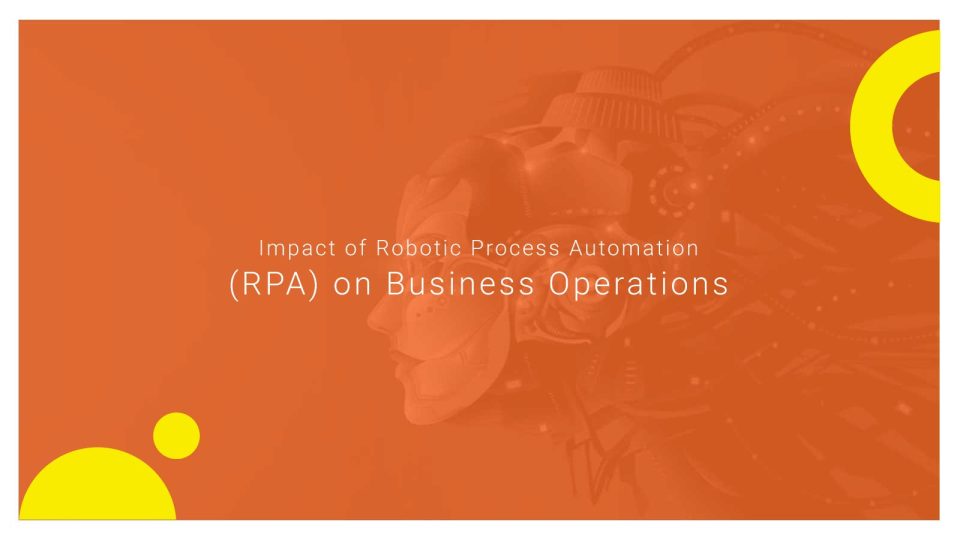In the current dynamic business environment, CIOs are increasingly turning to transformative tools and technologies to drive automation. Robotic Process Automation (RPA) has emerged as a pivotal force in this revolution.
Across banking, insurance, retail, and supply chain management, organizations are eagerly adopting various forms of automation. According to Grand View Research, the global robotic process automation market size was valued at USD 2,942.7 million in 2023 and is projected to grow at a compound annual growth rate (CAGR) of 39.9% from 2023 to 2030
Agility is paramount for navigating the dynamic technology and business environment in the digital transformation journey. Organizations must exceed expectations with a robust digital mindset and innovative strategies. Enabling businesses to adapt and evolve rapidly is crucial for sustained success.
Also Read: Essential Skills for Future CIOs in 2024 and Beyond
Robotic Process Automation (RPA) utilizes software robots or “bots” to automate repetitive tasks involving digital systems, applications, or software interfaces. Its primary goal is to streamline and optimize business processes by automating manual tasks prone to errors and inefficiencies. By leveraging RPA, businesses can achieve operational efficiencies, cost savings, enhanced accuracy, and redirect human resources toward strategic initiatives.
What is RPA?
Robotic Process Automation (RPA) is a transformative technology that has garnered attention from businesses aiming to boost efficiency and productivity. It enables the automation of repetitive tasks across various business processes, such as document processing, data entry, extraction, and workflow management, thereby digitizing operations. By eliminating manual processes, RPA frees up staff from low-level tasks, streamlining operations and enhancing productivity. Moreover, RPA ensures high accuracy and consistency by executing tasks based on predefined rules and algorithms. This technology ultimately reduces costs, shortens lead times, and enhances customer service, empowering businesses to operate smarter and more efficiently.
 Evolution of Robotic Process Automation
Evolution of Robotic Process Automation
Robotic Process Automation is a versatile toolkit that joins different types of automation technologies into different applications. Its evolution started earlier than its name, ‘RPA’, which only rose to prominence in the early 2000s, though it really began in the 1990s.
Early 2000s: Emergence and Expansion
First dependent on artificial intelligence, then screen scraping and workflow automation, RPA soon matured beyond these early technologies.
1990s: Automation in UI Testing
In the 1990s, UI testing automation was in the limelight for perfect user interaction in different system configurations.
2000s: Adoption in Banking and Finance
Though there were apprehensions at first, automation in the banking and insurance industries was adopted to handle large amounts of data by using screen scraping for smooth data extraction.
2010s: Enterprise Integration
Fast-paced digital transformations in enterprises, coupled with financial crises, saw the adoption of RPA as a cost-effective measure to optimize operational efficiency.
2020s: Continued Dominance
The role of RPA broadened even further amazingly within the 2020s during the COVID-19 pandemic, helping businesses improve productivity by automating workflows.
Also Read: Top 5 Cloud Trends for CIOs in 2024
The Top 10 Benefits of RPA in Modern Business
Cost Efficiency
RPA significantly reduces operational costs by 25% to 50%. Unlike the human workforce with fixed work hours and leaves, RPA bots operate 24/7 without interruption, covering absences and enhancing productivity.
Improved Analytics
RPA tools enable businesses to store and analyze data, extracting actionable insights with minimal errors. This enhances decision-making, promoting growth and productivity by providing a clear market position and areas for improvement.
Increased Accuracy
RPA ensures higher accuracy as robots strictly adhere to programmed rules, resulting in 100% precision. This reliability and consistency optimize organizational capabilities and reduce human error.
Amplified Data Security
RPA minimizes the risk of data leaks between platforms when managed and defined correctly. It reduces the number of manual touches needed to process sensitive information, complying with strict data handling regulations and enhancing security.
Enhanced Communication
RPA automates the process of updating and tracking minor updates, freeing employees to focus on more critical tasks. It ensures timely execution of business processes, keeping on-field workers and end-users informed with the latest information.
Enhanced Productivity
RPA bots excel at performing specific routine tasks like data mining and integration, completing them faster and with greater efficiency. This allows employees to focus on more valuable activities, thus boosting overall productivity.
Improved Customer Experience
RPA, especially with AI-powered natural language processing, plays a significant role in customer service. It generates automated reports to understand and address customer needs efficiently, improving overall customer satisfaction.
Quicker Service
RPA completes tasks that typically take human resources days to finish in just a few hours, and without errors. This leads to faster service delivery, increasing customer satisfaction and reducing the need for supervision or subsequent corrections.
Non-Disruptive Automation
RPA facilitates the seamless replacement or upgrade of legacy systems. It interacts with these systems at the UI level, enhancing compatibility and efficiency without causing business downtime or incurring high costs.
Automated Responses and Triggers
RPA systems can schedule tasks and initiate triggers without human intervention. For example, receiving an email or document can start a fully or partially automated process, streamlining operations for CEOs, TLs, and Managers.
Also Read: CIO Interview with Joey Fitts, Group Vice President, Analytics Product Strategy at Oracle
RPA Implementation Process
Phase 1 – Assessing RPA Opportunities
The first step towards successfully implementing RPA is to identify the eligibility of processes for automation based on a proper assessment. Look more closely at the potential candidates’ efficiency gains and cost-saving possibilities. Engage stakeholders early to secure buy-in and direction with falls. Utilize technology demonstrations by RPA vendors for purposes of proof-of-concept and learning.
Key Tasks
- Research RPA services and vendor capability
- Define project objectives and governance
- Identify preliminary process candidates for automation
- Provide updates to the stakeholders for strategic direction
- Define guiding principles for the selection of processes
Phase 2 – Vendor Selection
Phase 2 involves choosing an RPA vendor based on technical requirements and evaluation criteria. Kick off a request for proposal process to assess vendors’ capabilities through on-site presentations and proof of concepts. Choose the vendor most aligned with the technical needs, business case, and future scaling.
Key Activities
Finalize vendor proposals and demonstration use cases
- Issue request for proposal to selected vendors
- Evaluate vendor responses and onsite presentations
- Select vendor based on technical fit and financial business case
Phase 3 – Pilot and Implementation
Run the selected RPA solution by pilot testing and full implementation, ensuring that the human resources and IT environment are ready by institutionalizing the documentation of the implementation activities and tracking them. Refine processes based on pilot outcomes to provide a base for a long-term RPA strategy.
Key Tasks
- Manage detailed implementation plan and readiness assessment
- Run the pilot with the chosen vendor; resolve problems as they occur
- Finalize the business case and benefit realization model
Phase 4– Managing the RPA Lifecycle
Establish and run RPA operations through structured governance and an operating model. Set up a COE, governance framework, and change management plan to support, as much as possible, the long-term excellence and scalability of RPA initiatives.
Key activities
- Governance and operating model implementation
- Establishing an RPA center of expertise
- Change and communication strategies
Top RPA Tools to Know About in 2024
Automation Anywhere
UiPath
Blue Prism
IBM
Kofax
WorkFusion
Robotic Process Automation Case Studies
#1 Deloitte Enhances Information Management with Smart Chatbots
Challenge
Deloitte, a leading Big Four accounting firm, faced significant challenges in managing its extensive technical library. This library, containing essential information on global regulations, tax laws, and accounting theory, was difficult for employees to navigate using a conventional search engine with limited functionality.
Solution
To overcome this issue, Deloitte’s analytics and innovation team developed a smart chatbot for business process automation. This chatbot revolutionized the search process by responding to natural language queries, effectively acting as an automated librarian. This innovative solution simplified the search process, enabling users to conduct advanced searches and access relevant resources more efficiently.
The chatbot also collected valuable data on employee search behavior and user satisfaction. These insights allowed library managers to continuously update the algorithm and improve resources based on comprehensive user feedback and preferences. This iterative process ensures that the library’s resources remain aligned with its users’ evolving needs.
#2 Dentsu Advances Automation Strategy with UiPath
Dentsu serves as an integrated growth and transformation partner for leading global organizations. With over 71,000 employees and serving more than 11,000 clients across 145 markets, including 95 of the world’s top 100 advertisers, Dentsu stands as a giant in the marketing and advertising industry.
Challenge
Despite significant automation achievements, Dentsu sought to further enhance its operations. The company had already saved hundreds of thousands of hours and reduced repetitive tasks, but it aimed to take its automation journey to the next level. This challenge prompted a deeper integration of UiPath’s capabilities.
Solution
To address this challenge, Dentsu’s Director of Automation Solutions, Flo Ye, spearheaded the migration to UiPath Automation Cloud™. This shift democratized automation across the organization, enabling browser-based access to the full UiPath Platform. The move facilitated collaboration and streamlined automation processes across various regions, transforming a previously fragmented approach into a cohesive strategy.
Outcomes
- Annual Savings: Dentsu has saved over 600,000 hours annually as of the end of 2023, with expectations to exceed one million hours.
- Automation Deployment: Over 600 automations have been deployed, with 400 additional ideas in the pipeline.
- Enhanced Efficiency: Key projects, such as reducing a complex finance process from one day to just 10 minutes, have significantly improved efficiency.
Conclusion
Designing, detailed planning, and strong governance are essential for the success of RPA. Businesses can fully use the power of RPA by pairing this technology with other innovative technologies that include AI, ML, NLP, and speech recognition. Where RPA makes automation of tasks possible with structured input and human interventions, AI interprets unstructured data on its own and executes tasks, thus marking a line of differentiation between these two technologies.
RPA has been adopted by industries in various sectors and has become the main component of their processes. In most cases, this shift resulted in a marvelous improvement in employee productivity and creativity since all mundane activities were transferred to the RPA bots for processing with high efficiency and reducing errors to almost nil. With innovation continuing to be made in RPA technology, it is sure to turn out to be an indispensable asset for all sectors. For easier integration into your business, consider seeking out RPA experts who will get through the labyrinth of procedures in a way that unlocks real power.
[To share your insights with us as part of editorial or sponsored content, please write to psen@itechseries.com]


